
REVIEW: Dreams Come True: The Art of Disney’s Classic Fairy Tales
At the time of his death in 1966, Walt Disney was renowned as a pioneer of the American film industry: the figure responsible for introducing feature-length animation to the big screen. However, in the years since, the name Disney has come to signify something far greater in cultural terms. While remaining synonymous with the field of animation, the Disney brand has become a globally recognised symbol of moral certitude wrapped in the nostalgic promise of childlike innocence.
 Focussing on a selection of Disney’s adapted works, the Australian Centre for the Moving Image’s (ACMI) latest exhibition, Dreams Come True: The Art of Disney’s Classic Fairy Tales is a testament to both the studio’s industrial accomplishments and sociological influence.
Focussing on a selection of Disney’s adapted works, the Australian Centre for the Moving Image’s (ACMI) latest exhibition, Dreams Come True: The Art of Disney’s Classic Fairy Tales is a testament to both the studio’s industrial accomplishments and sociological influence.
Echoing the exhibition’s title, Dreams Come True opens with a timeline of Walt Disney’s life; a rags-to-riches tale about a young man with a handful of dollars who set off for Hollywood and became a household name. Less an exhibition about the man than a presentation of animated work, Dreams Come True explores the kinds of stories upon which the Disney Studio was founded: fables, folk stories, myths and fairy tales.
Beginning with his short animations (Silly Symphonies) the exhibition briefly outlines the source inspiration for much of Disney’s work. Amongst others, reference is made to the tales of Hans Christian Andersen (The Ugly Duckling), the Brothers Grimm (Snow White), Aesop (The Tortoise and the Hare) and Ovid (Metamorphoses). While the work of these European storytellers was often characterised by dark themes and in some cases, extreme violence, Disney adapted the tales to appeal to the family values of his American audiences.
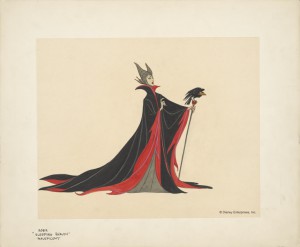 This principled approach to adaptation has long been the foundation of the Disney enterprise: an emphasis on moral absolutes and clear distinctions between good and evil, right and wrong and the triumph of light over dark. As one of the many quotes by Walt Disney in the exhibition explains, “The screen version must perceive and emphasise the basic moral intent and values upon which every great persistent fairy tale is told”.
This principled approach to adaptation has long been the foundation of the Disney enterprise: an emphasis on moral absolutes and clear distinctions between good and evil, right and wrong and the triumph of light over dark. As one of the many quotes by Walt Disney in the exhibition explains, “The screen version must perceive and emphasise the basic moral intent and values upon which every great persistent fairy tale is told”.
Likewise, the descriptions accompanying much of the artwork are clear in their dismissal of any political subtext within Disney’s animations. One such statement purports that, “While many of the tales originally contained sly political and social commentary, with the passage of time those overtones disappeared, the fun and rhythm of their language has made them endure as rhymes to read or recite to children”.
While I would question the ideological neutrality of the Disney filmography – the issue of gender representation is just one in which there is ample material to debate – this exhibition is perhaps best approached in terms of the individual pieces of art. Of the six hundred works (predominantly cel animations, sketches, paintings, poster art and maquettes) on show, Dreams Comes True provides a number of curious gems, particularly in terms of the early conceptual work.
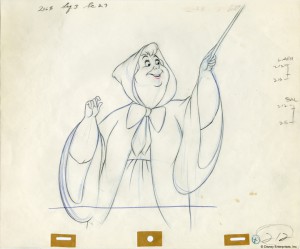 Amongst them, the initial designs for Snow White – one that bares a striking resemblance to Betty Boop – and the Beast – depicting the artists’ struggle to achieve a character that is at once handsome and ‘beastly’ – are highlights. Likewise, the storyboards detailing Cinderella’s transformation – a sequence Walt Disney described as his favourite moment of all the animated works – and the tonal studies of the darkly lit forests and castle interiors from Sleeping Beauty reflect the artistic talents that helped establish Disney as the pre-eminent animation studio.
Amongst them, the initial designs for Snow White – one that bares a striking resemblance to Betty Boop – and the Beast – depicting the artists’ struggle to achieve a character that is at once handsome and ‘beastly’ – are highlights. Likewise, the storyboards detailing Cinderella’s transformation – a sequence Walt Disney described as his favourite moment of all the animated works – and the tonal studies of the darkly lit forests and castle interiors from Sleeping Beauty reflect the artistic talents that helped establish Disney as the pre-eminent animation studio.
In terms of the layout, Dreams Come True seems to have been constructed specifically with children in mind, as most of the pieces on show are positioned on the outer walls. Only a few display cases or media installations interrupt the wide-open spacing of the exhibition and while this allows for ease of navigation, the overall spatial design lacks the more innovative sensibility of ACMI’s previous exhibitions such as the Tim Burton or Pixar installations.
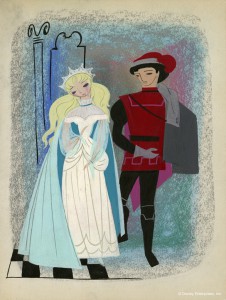 Dreams Come True showcases a total of seven feature films, three from the classic era (Snow White and the Seven Dwarfs, Cinderella, Sleeping Beauty), and four contemporary works (The Little Mermaid, Beauty and the Beast, The Princess and the Frog, and the soon-to-be-released, Tangled). Each of the films and their related artwork have been placed in bright colour coded sections (eg. Snow White in red, Cinderella in blue etc.) to clearly distinguish the pieces belonging to each feature. Given the dominant use of colour within the artwork and animations, this form of delineation is a novel touch.
Dreams Come True showcases a total of seven feature films, three from the classic era (Snow White and the Seven Dwarfs, Cinderella, Sleeping Beauty), and four contemporary works (The Little Mermaid, Beauty and the Beast, The Princess and the Frog, and the soon-to-be-released, Tangled). Each of the films and their related artwork have been placed in bright colour coded sections (eg. Snow White in red, Cinderella in blue etc.) to clearly distinguish the pieces belonging to each feature. Given the dominant use of colour within the artwork and animations, this form of delineation is a novel touch.
While fans of popular works such as The Lion King and Aladdin may potentially be disappointed by the narrow breadth of films on display the selection rings true with the exhibition’s specific fairytale focus. What is frustrating however, is that beyond the introductory section Dreams Come True provides only the briefest mention of the traditional sources for the films on show, and no comparative artwork to distinguish between the Disney vision and any earlier visual works.
Admittedly, exhibiting these pieces in a more comparative framework might involve certain logistical complications and would no doubt shift the exclusive focus away from Disney,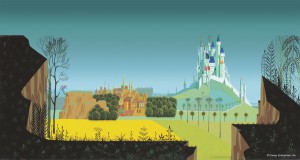 but given that Dreams Come True is premised on forms of ‘adaptation’ it does feel like a missed opportunity. This is particularly so in light of curator Lella Smith’s acknowledgement that “it had always been Walt’s intention to tell the stories and to have people go back and be interested in reading the originals. I don’t think he meant to say that his was the only version that could be told”.
but given that Dreams Come True is premised on forms of ‘adaptation’ it does feel like a missed opportunity. This is particularly so in light of curator Lella Smith’s acknowledgement that “it had always been Walt’s intention to tell the stories and to have people go back and be interested in reading the originals. I don’t think he meant to say that his was the only version that could be told”.
It may not be the intention, but it’s hard to imagine too many people coming away from this exhibition, least of all children, with a far greater awareness of the rich history of myths, fables and fairy tales upon which Walt Disney founded his empire.
Dreams Come True: The Art of Disney’s Classic Fairy Tales runs until April 26th 2011 at the Australian Centre for the Moving Image in Melbourne, Australia
For details visit the ACMI exhibition website:
http://www.acmi.net.au/dreamscometrue.aspx
2 Responses to “REVIEW: Dreams Come True: The Art of Disney’s Classic Fairy Tales”
RSS feed for comments on this post. TrackBack URI
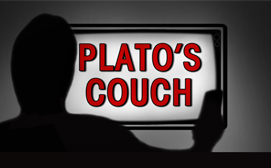

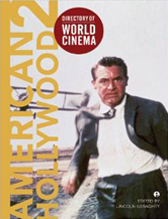
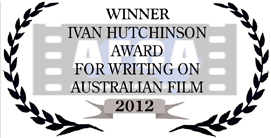
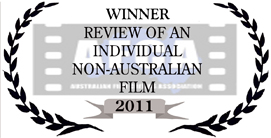
I just found your review of this exhibition and found it really interesting. Your comments about a comparative framework are spot on, and a big part of what separates this from the much better exhibition that toured in Europe and Canada (and perhaps elsewhere?) four or so years ago.
My own take on the ACMI exhibtion is here: http://www.sterow.com/?p=2257
You make a number of excellent points in your review, Stephen. I share your scepticism about the amount of space dedicated to the final two films (but particularly ‘Tangled’) as little more than transparent marketing and promotion. It was also the weakest section for mine in terms of the ‘art’ on display.
I wished I’d been able to see the European exhibition – it sounds far more interesting in terms of its scope.